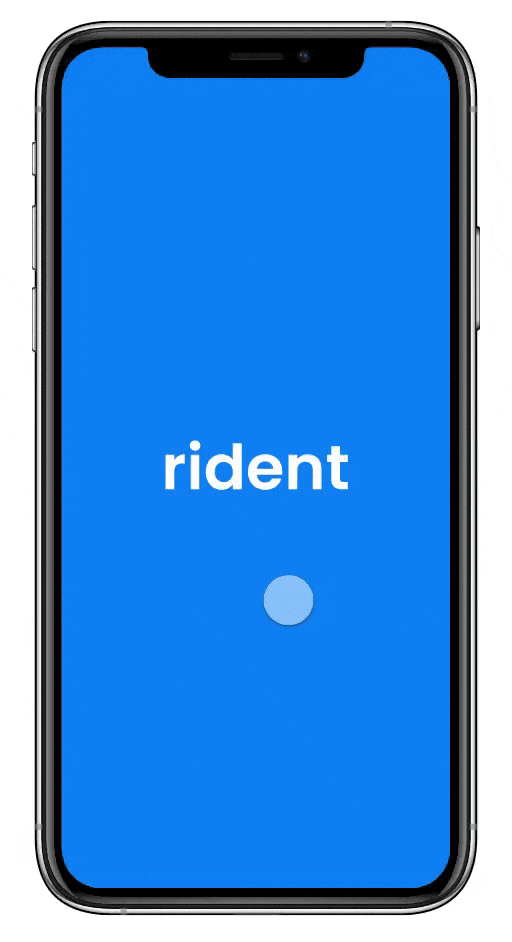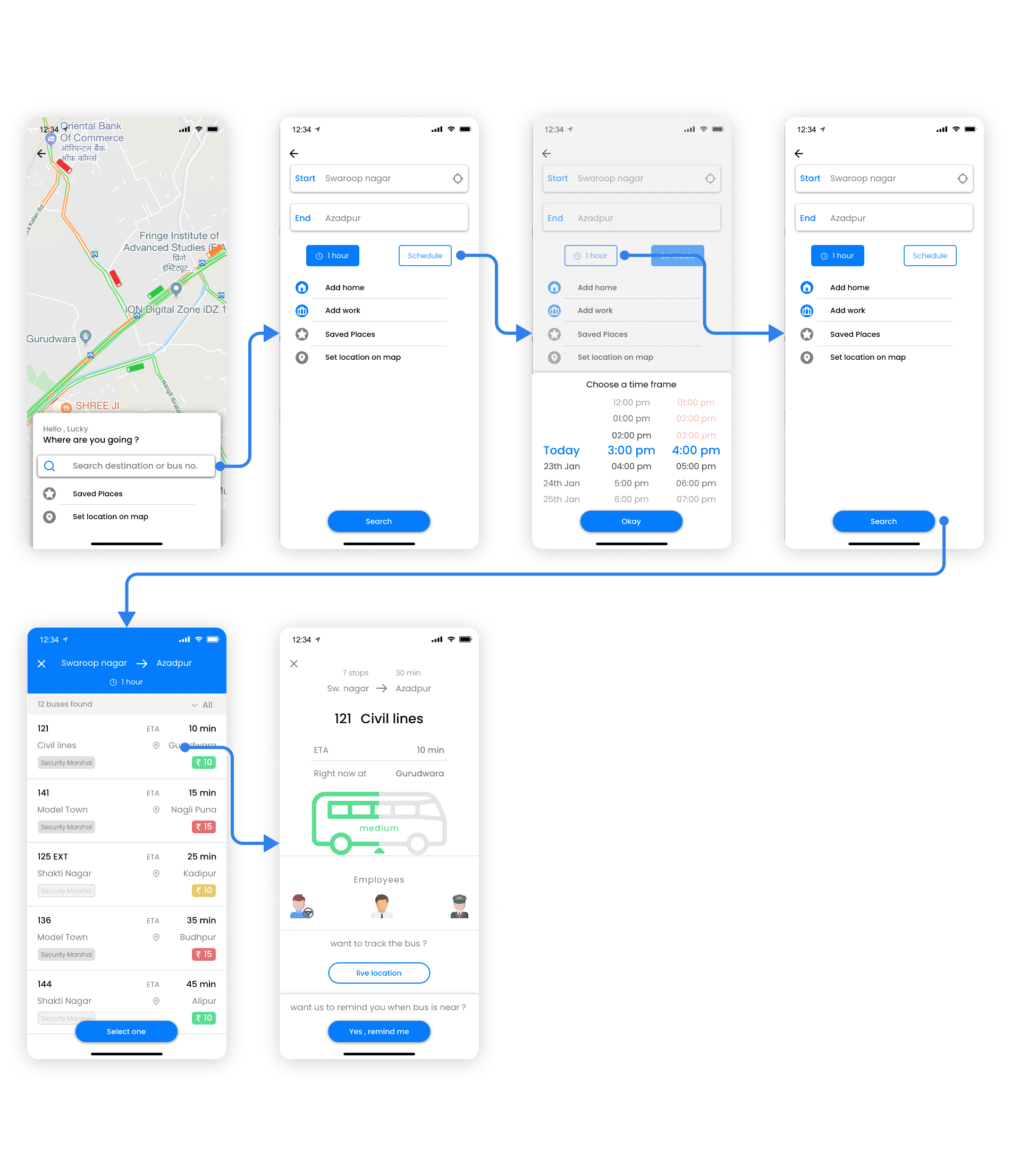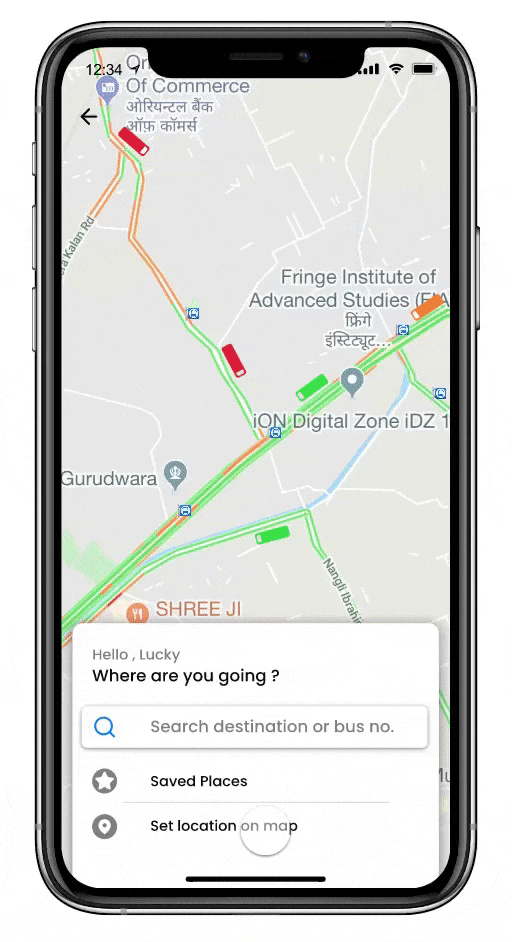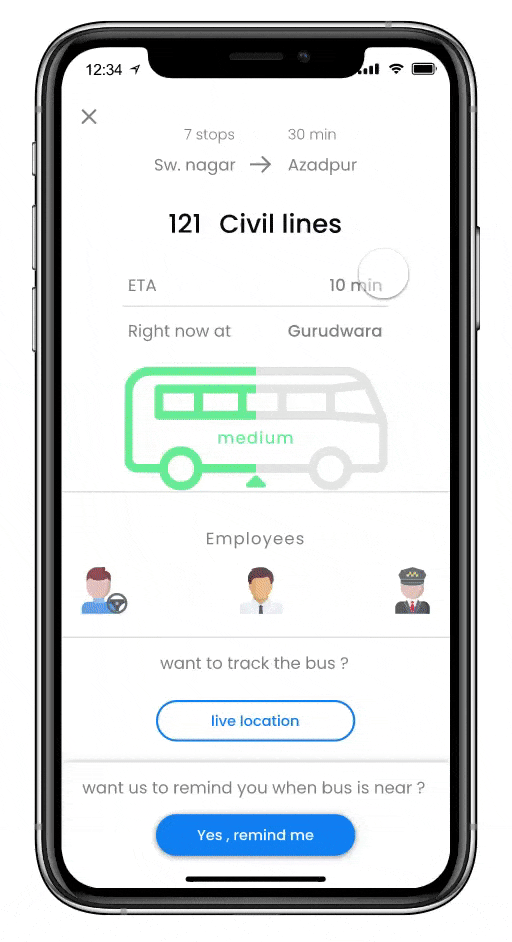
Rident
How might we make waiting for the bus feel much, much shorter?
Rident app provides the real-time bus location and the nearest bus stop to the end-user and makes his journey more comfortable. Provide the user with the expected time of the bus to reach the bus stop so he/she can manage their time and leave their places accordingly.
OVERVIEW
My role
User Researcher
User Experience Designer
User Interface Designer
Project Information
Individual Design Exercise
Tools
Pen and Paper
Adobe XD
Invision Studio
Photoshop
Project Constraints
I'll limit the scope for this project to Delhi and problems faced by people here in public transport.
My Process
User Research
User Interviews
Persona
Journey Mapping
Sketching
Wireframing
Visual Design
Timeline
1 Week
Problem
The existing system of DTC ( Delhi Transport Corporation ) buses having the time table and schedule for the buses for their arrivals and departures from every source to every destination for all the routes. Although buses follow this time table and are dispatched on scheduled time but due to the problems faced on the routes like traffic jams, accidents, technical problem or many more, they are not able to reach the destination on time because of this passengers have to wait for a long time sometimes to board the bus.
Solution
The solution is to avoid the wastage of time waiting for a bus on the bus stops. This can be achieved by providing the real-time tracking system to the buses, which gives the detailed information about the bus location and expected time to the passenger so that they can leave their homes or workplaces accordingly.
RESEARCH
Understanding the problem
why we want to motivate people to use public transport and how can it help them ?
Cost of congestion
"Traffic jams in Delhi cost $10 billion a year"
Substituting public transport ride-sharing for private cars could eliminate between 33%-68%of the total cars on the road in these cities—going a long way towards eliminating congestion during peak hours.
Good For Health
"Longer commutes correlate with higher level of cortisol”
On average you're walking 2000-3000 steps and a couple of stairs that can add upto 200 extra calories burnt everyday while using public transport.
Reduces air pollution
"7 of the world’s 10 most polluted cities are in India"
Public transport emits less hydrocarbon , nitrogen oxides and carbon mono-oxide than an automobile with a single occupant.
Saves up money
“89% of commuters surveyed in Delhi plan to buy a new car in the next 5 years“
Taking public transportation instead of buying a new vehicle can save you on average 1 Lakh per year plus cost of new car + Insurance +maintenance.
Saves Time
"On average, commuters in India spend 1.5 hours more on their daily commutes”
Public transport allow riders to spend time reading book , listen to podcast and music , and watch their favorite TV shows or movies.
It’s Safer
"Delhi tops the chart with highest number of Road Crash Deaths"
Taking the bus, metro or other public transport is safer than driving a car.
Defining User needs
At the discovery phase of my project, I conducted user interviews in order to get a better understanding of the problem.
I conducted a quick semi-structured interview with people around me. By performing interviews, I learnt existing user behavior, pain points towards the problem.
I started this case study with a different goal in mind.
"How might we encourage people to take public transport"
but after talking to my target audience and keeping in mind my one-week time constraint, I narrow down the goal to
" How might we make waiting for the bus feel much, much shorter"
Persona & Anti-Persona
After Analyzing the data collected from research, I created four personas that represent my target users for the app.
I referred to them throughout the entire product development process.
“Personas help in narrowing down our user base and help in keeping our target audience that we want to serve in mind”
I also created two anti-persona to make sure that I remember who I am not designing for.
User Needs
Going through my research I found out that I need to add more features to not only make waiting for the bus feel shorter, but also to make the travelling through buses safer.
Competitive analysis
A competitive analysis is a way to collect and compare data about products (and companies) in the marketplace.
This method is often used to highlight strengths and weaknesses of products in order to make more informed decisions about your product strategy.
DETERMINING CONTEXT OF USE
Where and with whom a person interacts with a product has a huge impact on our product and design choices.
DESIGN
Ideation
I usually start the design process with low fidelity sketches. This is the way I iterate through many design options quickly.
But before I start sketching, I need to keep in mind these design goals -
Need a screen where the users can check the available buses on a particular route.
Need a way to tell if there's any security marshal present on the bus.
Allow users to set a reminder when a particular bus is about to reach their's bus stand.
Need a way to tell users about how much packed the oncoming bus is.
My goal is to generate as many ideas as possible and choose the most promising ones.
Wireframes
Style guide
UI Design
User Flow
Onboarding
Searching for buses
Setting a reminder
All Screens
UI Shots






Measuring success
Coming up with a solution doesn’t help much if we don't know to measure its success. Now is the time to close the loop and define how we can validate the solution. To do that we need to ask ourselves a question. How would we know that the solution was successful?
Overall completion rate - % of people that finished the whole process from tracking the bus to set the reminder and then to paying through our app
Retention over time
"Remind me" requests rate
"Live tracking" requests rate
Long term - whether people are spending more money on public transport through our app over time
Future steps
The project is having a wide scope in the future.
Allow booking cabs and bikes through the same app.
Display number of available seats.
On the final screen, after the transaction ends, we could display information about the resources the customer saved by choosing public transport over private transport. For example “with this purchase, you saved 60 pounds of carbon that would have been produced by taking a car” or “...you saved x rupees vs. driving your car”. This would increase their awareness of the environmental impact of our product, make them feel good about their choice of public transport.
Display screens can be installed on the bus stops which display the expected time of the bus to reach there.
Gives the information about inside the bus like the number of passengers travelling in the bus.
Assumptions-Validations
“We think our target audience will have a smartphone with them.”
The number of smartphone users in India is about reach 299.24 million.
“We assume that the buses will be accompanied by GPS.”
Delhi Govt. to install CCTV’s , Panic button and GPS in DTC buses.
“We think our target audience will have a Internet connection with them.”
With over 560 million internet users, India is the second largest online market in the world.
“We think there is a solution to tell about how packed the bus is.”
The bus employees ( Driver, Ticket Collector or Security marshal ) on the bus will update online about how packed the bus is.
“We are assuming buses will accept payments through our app and people also use our app for the same.”
We can offer cash back or rewards in return for paying through our app in public transport.
What I have learned
After doing this project I've learned that you just need to start doing things. Just write down your idea, don't let it keep running through your head. Sometimes by writing down things you can begin to see patterns and the problem start to solve itself.
Just take your pen and paper and start designing. Don't care about quality. sometimes things may take some time but it’s worth it. And finally start doing projects, Watching YouTube tutorial won't take you anywhere. You have to do projects in order to learn.
“You don’t have to see the whole staircase, Just take the first step.”
Behind the scenes


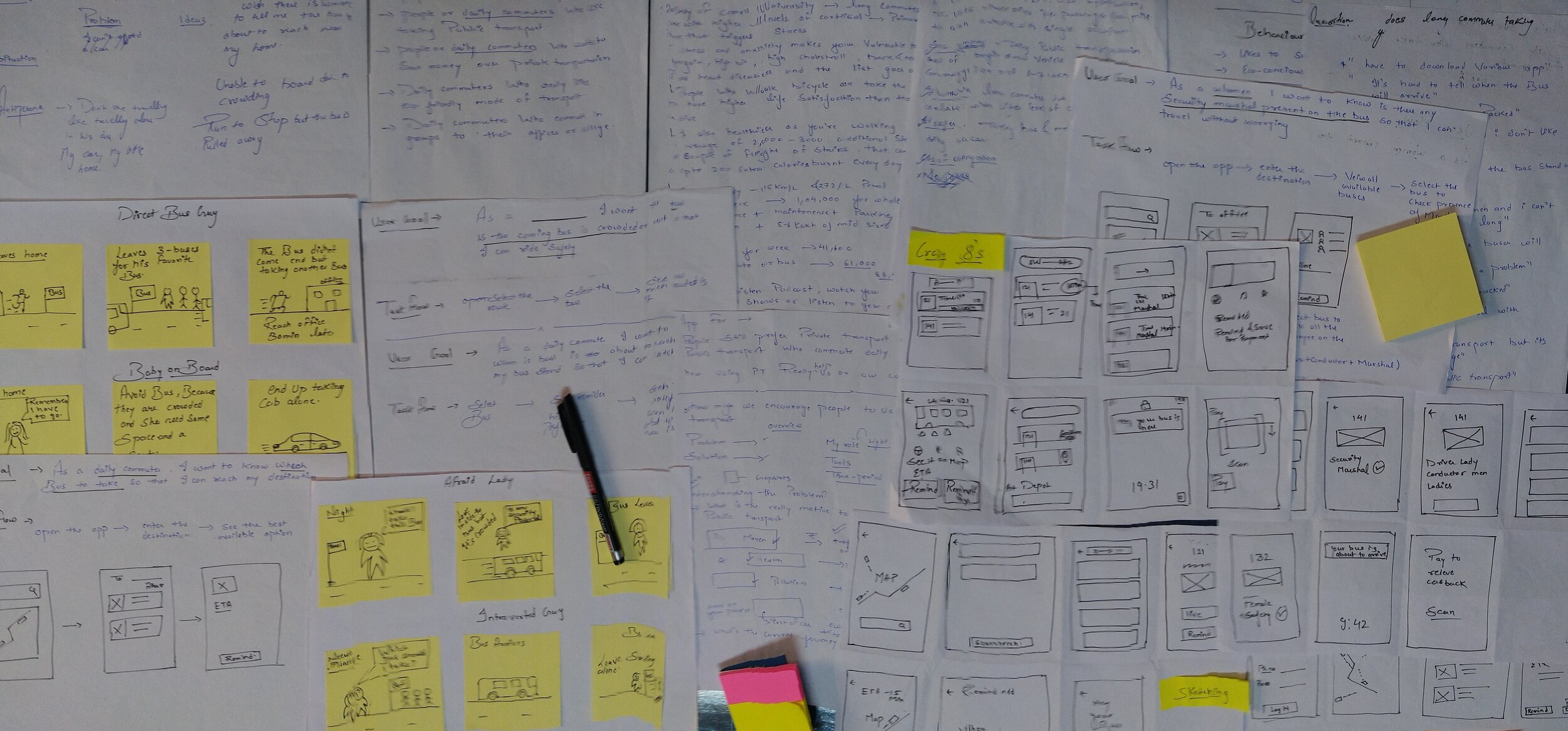



The End
Thank you all for reading through this case study. Hope you all enjoyed it.











